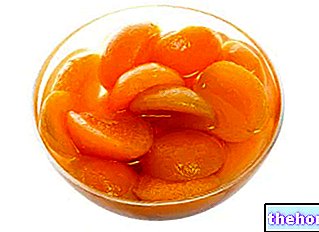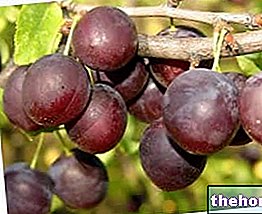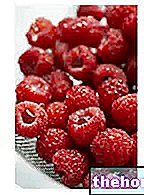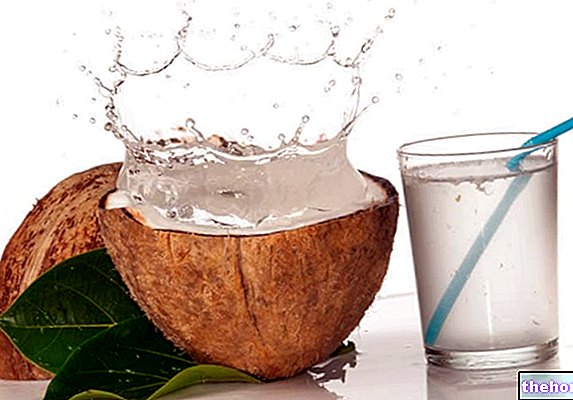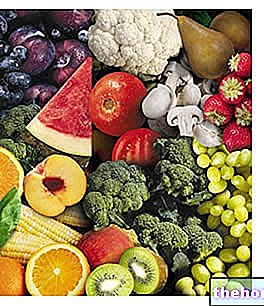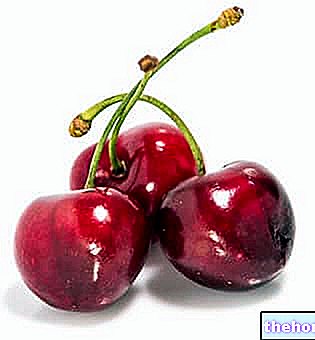Introduction: the olive oil
Olive: botanical aspects and cultivation
Composition of the ripe olive, nutritional properties
Olive harvest
Olive oil: chemical composition
Olive oil: properties and nutritional characteristics
Preparation of the olive oil
Conservation of olive oil
Pomace oil
Classification of olive oils, analysis and fraud
Olive oil as a laxative
Olive tree in herbal medicine - sea buckthorn
Cosmetic use: olive oil - Olive oil unsaponifiables - Olive leaf extract
Olives usually ripen in October, if they are an early variety, or in December and January, if they are later. In addition to the type of olive tree, the ideal time for harvesting varies according to the seasonal climatic conditions and the cultivation technique used.
During the maturation of the olive there is a gradual increase in the percentage of oil and a progressive decrease in the aqueous one. It is therefore important that the harvest takes place at the right time and with the most suitable methods. These include:


combing
shaking of the olives
beating
Harvesting
SPONTANEOUS FALL
Value: it is an economically very advantageous harvesting method, as it is sufficient to wait for nature to take its course and the olives to fall spontaneously into the nets spread on the ground.
Defect: like all fruits, olives detach from the tree when they are excessively ripe and this determines a decay of the organoleptic and nutritional qualities of the oil (increase in free acidity). The oil is in fact formed by triglycerides, in addition to a certain level of ripeness of the pulp, are degraded by cellular enzymes; in this way we witness the detachment of fatty acids from glycerol and a consequent increase in free acidity.
An oil is all the more valuable the less its acidity is; this property gives it better organoleptic characteristics and preserves it from rancidity.
Collecting by spontaneous fall is therefore an economical method, but not always advisable.
The use of sagging substances, such as formic acid, maleic anhydride, linoleic acid and ascorbic acid, favors the spontaneous fall of the olives when they are not yet fully ripe.However, the use of these substances would contaminate the drupes and, consequently, the oil obtained from them. For this reason it is a difficult route to follow.
The most used methods for olive harvesting are combing and shaking.
COMBING
As the name implies, the branches of trees are combed with big rakes; this operation determines the detachment of the drupes, of some leaves but does not affect the tree structure. Also in this case, cloths will be placed under the olive trees to facilitate the harvesting of the fallen olives.
UNSOLD
It is done with mechanical arms that wrap the trunk or large branches of the olive tree and strike them gently, favoring the spontaneous fall of the drupes. Even this technique does not affect too much on the structure of the tree, which still undergoes significant stress. There is no shortage of disadvantages which in many cases are however compensated by the considerable savings in labor costs (some machines are equipped with umbrellas that collect the olives that have fallen in mid-air, mitigating the damage caused by the impact with the ground and speeding up the procedures of transfer to the mill).
A similar collection system uses small shakers carried on the shoulders of the operators, which cause softer and less energetic vibrations than large mechanical shakers.
ABBACCHIATURA
It is a method that was widely used in the past. It consists in hitting the branches of trees with large poles; the disadvantage is that by doing so, the younger twigs will be damaged, which will be entrusted with fruiting in the following year, damaging the productivity of the olive grove. The more mature olives, moreover, can break due to the impact with the pole or with the ground.
Hand picking
It is an excellent method of harvesting because, by picking the olives by hand, it is possible to select the best ones and preserve their integrity. Obviously, this is an impractical technique in large productions, due to unsustainable labor costs. On the other hand, stripping is very common at home, where it allows to obtain products of superior quality.
The shortest possible time must elapse between the olive harvest and the consequent pressing, to prevent the enzymatic degradation of triglycerides (which would lead to an increase in free acidity and a greater tendency to rancidity). The transfer from the nets to the mill generally takes place using powerful aspirators that convey the olives on special collection wagons.
Not all olives, however, are transported to the mill at the same time. After harvesting, it can take one to two days before they arrive at the factory; in this case it is necessary to keep them properly. Generally they are placed in dry and well ventilated warehouses and arranged on overlapping racks, but in very small thicknesses, so that the fruits do not crush each other. The traumas suffered by the olives in fact affect their cells, causing the oil contained in the vacuoles to escape, with consequent enzymatic degradation; the result is a deterioration in the quality of the product and an important economic loss.
You've read: the olive harvest, for more information read: olive oil.
Other Foods - Fruits Apricots Sour cherries Cashews Pineapple Watermelon Orange Avocado Banana Persimmon Persimmons Apple Chestnuts Cedar Cherries Coconut Watermelon Dates Feijoa Fig of India Figs Strawberries Berries Passion fruit (Maracujà, Granadilla) Jujube Kiwi Raspberries Coconut milk Lemons Almond milk Mango Apples Quinces Pomegranate Melon Blackberries Mustard Medlar Olives Taggiasca Olives Fermented Papaya Pears Peaches Plantains (Cooking Bananas) Pomelo Grapefruit Pink Grapefruit Plums, prunes Fruit juices and fruit juices Grape juice Plums Grapes Sultanas and Raisins OTHER ITEMS FRUIT Categories Food Alcoholics Meat Cereals and derivatives Sweeteners Sweets Offal Fruit Dried fruit Milk and derivatives Legumes Oils and fats Fish and fishery products Salami Spices Vegetables Health recipes Appetizers Bread, Pizza and Brioche First courses Second courses Vegetables and Salads Sweets and Desserts Ice cream and sorbets Syrups, liqueurs and grappas Prepare Basic tions ---- In the kitchen with leftovers Carnival recipes Christmas recipes Light diet recipes Women's, mom's and dad's day recipes Functional recipes International recipes Easter recipes Gluten-free recipes Diabetic recipes Holiday recipes Valentine's Day recipes Vegetarians Protein recipes Regional recipes Vegan recipes

